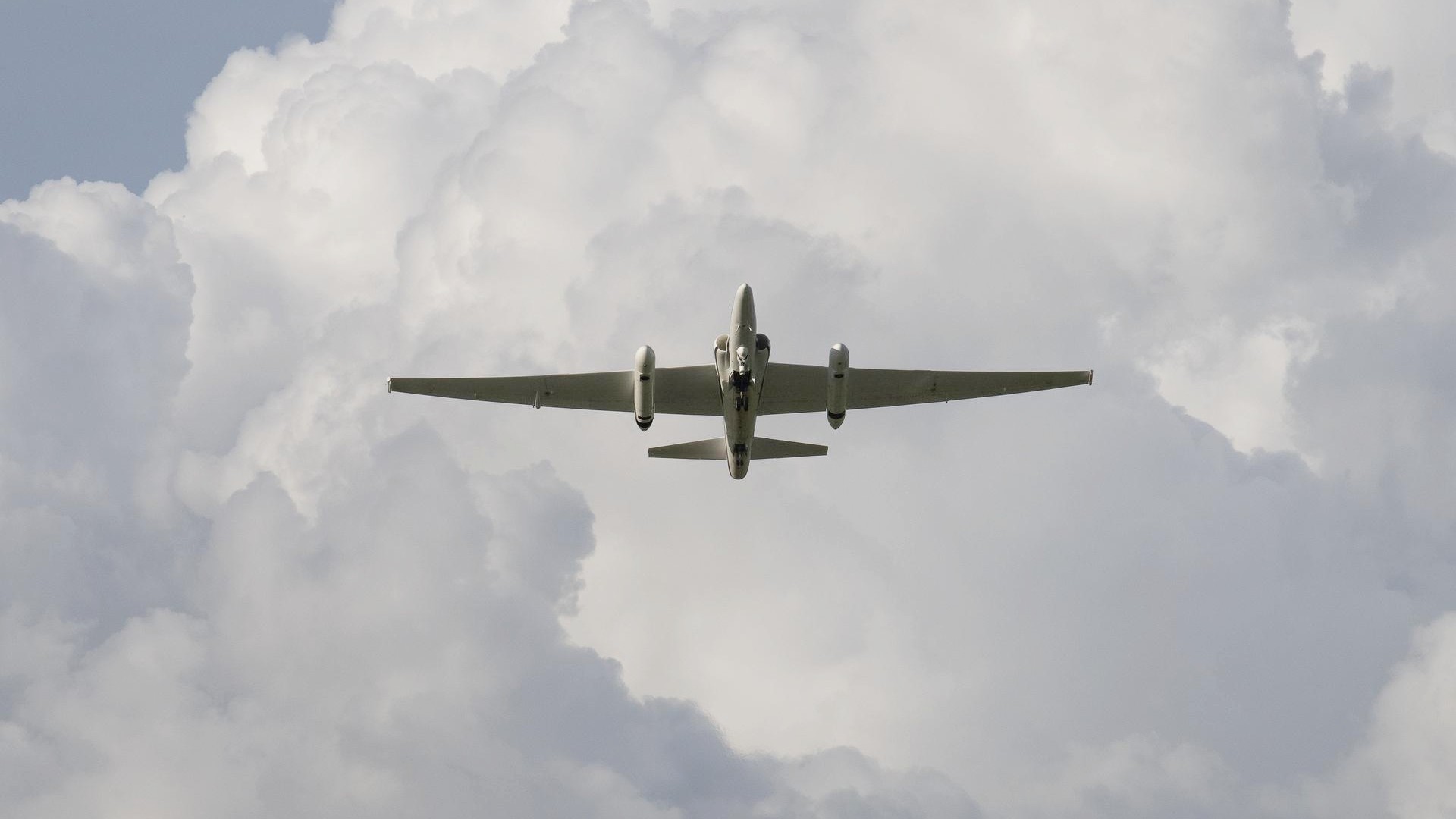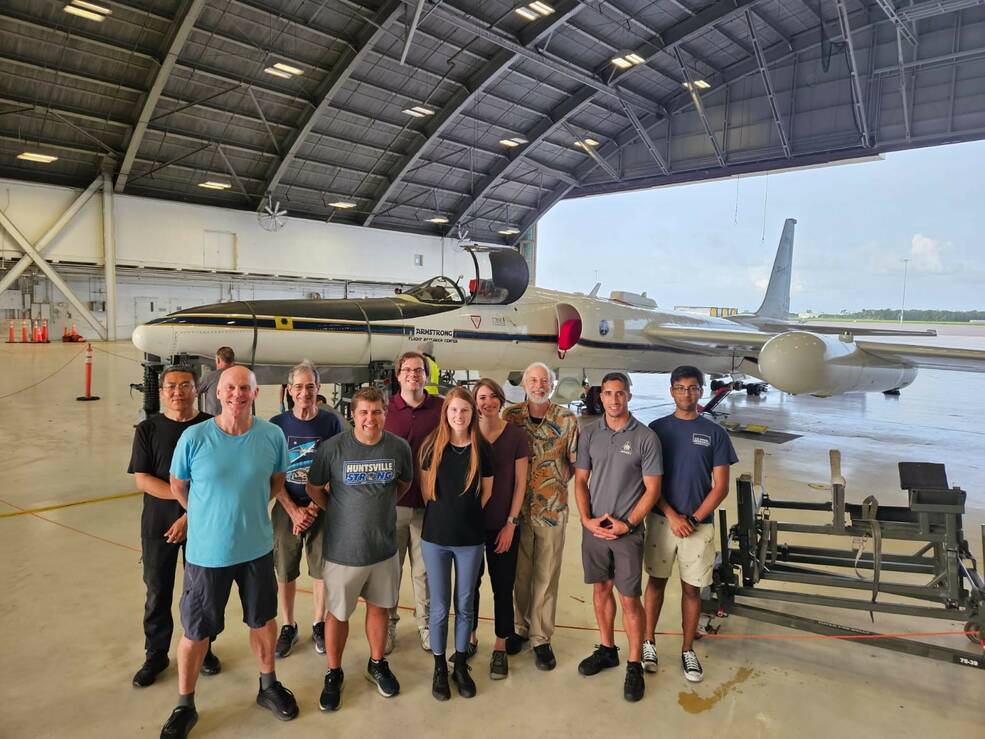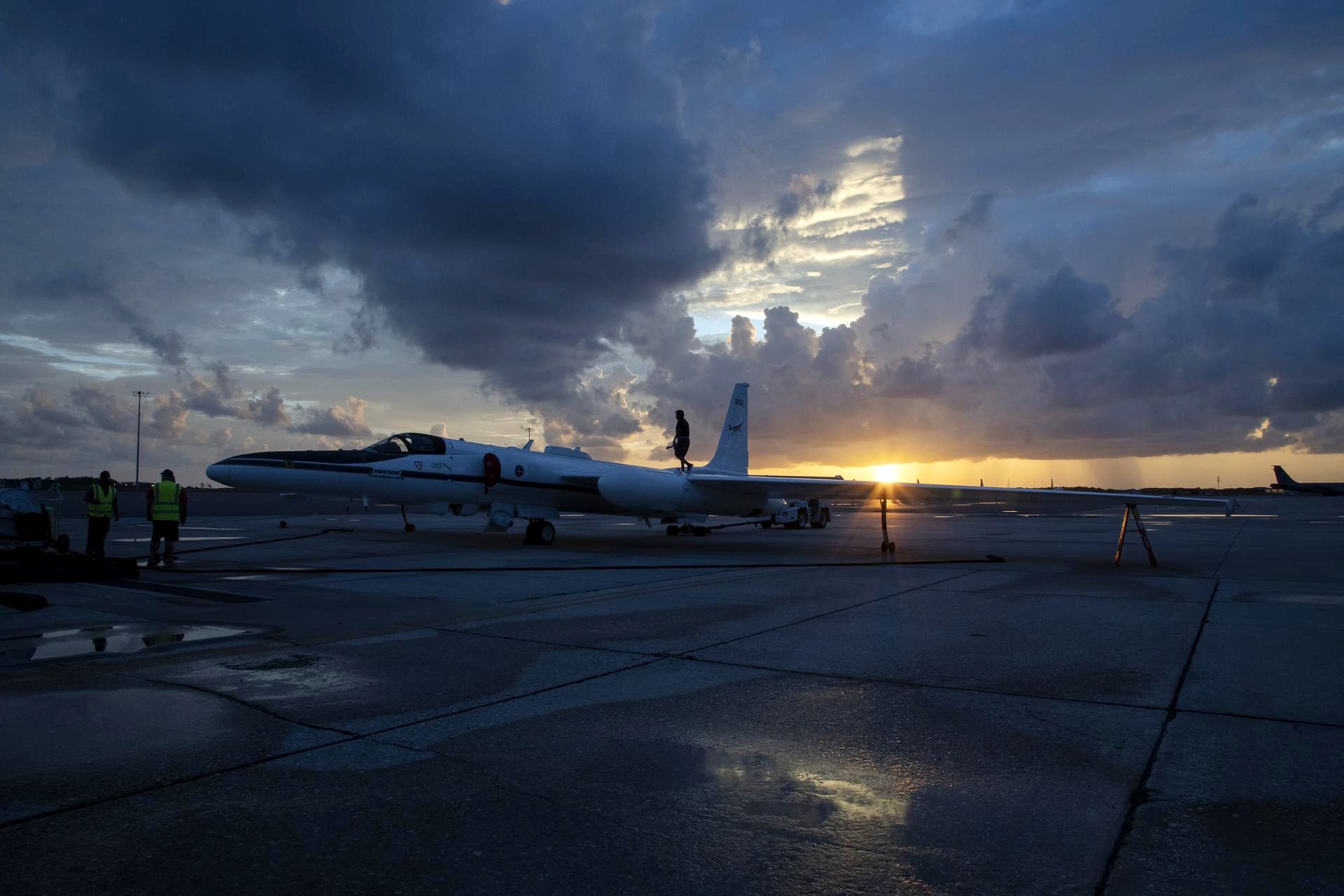NASA flew a modified U-2 spy plane into thunderstorms to study super-energetic gamma-rays
An international group of researchers captured 'the most detailed' data on gamma-rays and thunderclouds ever.
NASA pilots flew a high-altitude science aircraft directly into thunderstorms and recorded incredible data on gamma-ray flashes.
Thunderstorms can create powerful updrafts and downdrafts of wind that accelerate air and water to high speeds. As ice crystals collide in these swirling air currents, electrons are stripped away from them, generating the electric fields that produce lightning. Under certain conditions, these free electrons can also create flashes of gamma rays, the shortest and most energetic waves in the electromagnetic spectrum. Thunderstorms can emit two different types of gamma-ray radiation: Short gamma-ray flashes and longer gamma-ray glows that can last from minutes to hours.
To better understand these phenomena, an international group of scientists flew NASA's high-altitude ER-2 (Earth Resources 2) aircraft as close as safely possible to thunderclouds that stretched as high as 10 miles (18 kilometers), according to a statement from NASA's Marshall Flight Center in Alabama. Doing so allowed the team to gather "the most detailed airborne analysis of gamma rays and thunderclouds ever recorded," according to the statement.
Related: Gamma rays: Everything you need to know about these powerful packets of energy

Researchers from the University of Bergen in Norway, the U.S. Naval Research Laboratory (NRL) and three different NASA centers participated in the study, known as Airborne Lightning Observatory for Fly's Eye GLM Simulator and Terrestrial gamma-ray flashes, or ALOFT. The data the program has gathered could "help scientists see when storms are strengthening and provide extra lead time of information to keep the public safe from the threat of lightning," NASA's Timothy Lang said in the statement.

The aircraft flew out of Tampa, Florida and conducted over 60 hours of observations. A unique gamma-ray detector developed at the University of Bergen enabled researchers to collect data in real-time, enabling them to direct pilots towards thunderclouds that actively glowed with gamma-ray radiation.
Another instrument aboard the aircraft, the Fly's Eye GLM Simulator (FEGS), captured data in the near-infrared and ultraviolet wavelengths of the electromagnetic spectrum that are emitted by lightning yet are invisible to current satellites. "These smaller, less dense flashes are known as precursors of when storms are turning severe," Lang said.
Get the Space.com Newsletter
Breaking space news, the latest updates on rocket launches, skywatching events and more!

The high-altitude NASA ER-2 aircraft used in the study is one of only two in the agency's possession. The aircraft can fly extremely high in the sky, above 99% of Earth's atmosphere. They were based on the Lockheed U-2 spy plane and were acquired by NASA in 1981 and 1989, respectively.
NASA's two ER-2 aircraft have flown more than 4,500 missions to date, and one of them set an extreme altitude record for its weight class in 1998 when it got 68,700 feet (21 kilometers) above Earth, according to a NASA fact sheet. (For perspective: Commercial airliners generally cruise at altitudes around 35,000 feet, or 11,000 m.)
NASA's ER-2 aircraft have been used to conduct studies on new satellite sensors, global warming and ozone levels, atmospheric phenomena and even snowfall.
Join our Space Forums to keep talking space on the latest missions, night sky and more! And if you have a news tip, correction or comment, let us know at: community@space.com.

Brett is curious about emerging aerospace technologies, alternative launch concepts, military space developments and uncrewed aircraft systems. Brett's work has appeared on Scientific American, The War Zone, Popular Science, the History Channel, Science Discovery and more. Brett has English degrees from Clemson University and the University of North Carolina at Charlotte. In his free time, Brett enjoys skywatching throughout the dark skies of the Appalachian mountains.
-
Homer10 A very hard plane to taxi on the ground. The aircraft is the only one to have a bicycle landing gear. There are two little wheels that are on poles that fit into holes in the wings. These small wheels keep the wings from scraping on the ground during takeoff. Once the aircraft has left the ground, these two small wheels fall off the aircraft, and skittle down the runway, and are recovered by ground crews. They are about 4 feet long. When the aircraft comes in to land, there are bicycle wheels, but none of these wing tip wheels, so the pilot has to continue to fly the aircraft after it lands, even while the aircraft is going only 20MPH. A ground crew member stands next to the runway, and carefully waits for the approach of the aircraft. At this point the aircraft is going only 10-15MPH. When the aircraft nears the crew member, the guy starts to run, and catches the wing tip of the aircraft keeping the aircraft level, and not allowing the other wing tip to catch the ground. When the aircraft stops, the small wheels on the poles are brought in and re-inserted into the holes in the wings, and the aircraft is ready to taxi like a normal aircraft. This ballet is done for the U2 with every takeoff and landing.Reply -
Homer10 Reply
I use to work at Ames Research Center NASA, and I had an office that overlooked the runway. I watched that U2 tale off every day at 11:00 AM like clock work. The landing is a very interesting ballet as told above.Admin said:Researchers flew NASA's ER-2 aircraft as close to thunderclouds as safely possible and captured 'the most detailed' data of gamma-rays and thunderclouds ever recorded through airborne analysis.
NASA flew a modified U-2 spy plane into thunderstorms to study super-energetic gamma-rays : Read more -
Classical Motion I find it difficult to believe that plane or any plane can fly anywhere close to 62 miles in height.Reply -
billslugg Reply
Article says 68,700 feet. (13 miles)Classical Motion said:I find it difficult to believe that plane or any plane can fly anywhere close to 62 miles in height. -
Classical Motion Right, but didn't it also say that it could reach the boundary where 99% of the atmosphere is below.........that's 62 miles isn't it?Reply -
Classical Motion I thought 99% of atmosphere was at 62 miles......and called the space-air boundary.Reply -
Classical Motion I'm no expert on the atmosphere, I find it interesting how things are presented. It's easy to understand how moisture can be ionized with atmospheric acceleration. And then on top of that, the huge voltage potentials....now have super acceleration effects on this charge. And in this flux of charge accelerations, some portion is bound to be accelerated backwards.Reply
This can charge electrons to the energy level and mass level of a proton. Science does not recolonize this and calls these particles anti-protons. And at the same time....protons can be de-accelerated and relaxed to the energy level and mass level of an electron. They call these positrons.
A gamma will be emitted when the electron returns to it's normal state. And a gamma is emitted when the proton is relaxed. If these inverted particles can find a mirror particle with the same state........they are able to physically touch each other.......and will un-wrap each other.
Mass Disintegration. -
Classical Motion The hard x-ray and the gamma are impossible for us to detect electrically, like light and radio.Reply
But hopefully, some of these new quantum condensate detectors, might allow us to do so. If we can build faster switches. We desperately need much faster switches. In order for much smaller duration events and measurements.
With such detectors and switches, plus a slowing down media or structure, we might one day sample light, like we do with radio.









